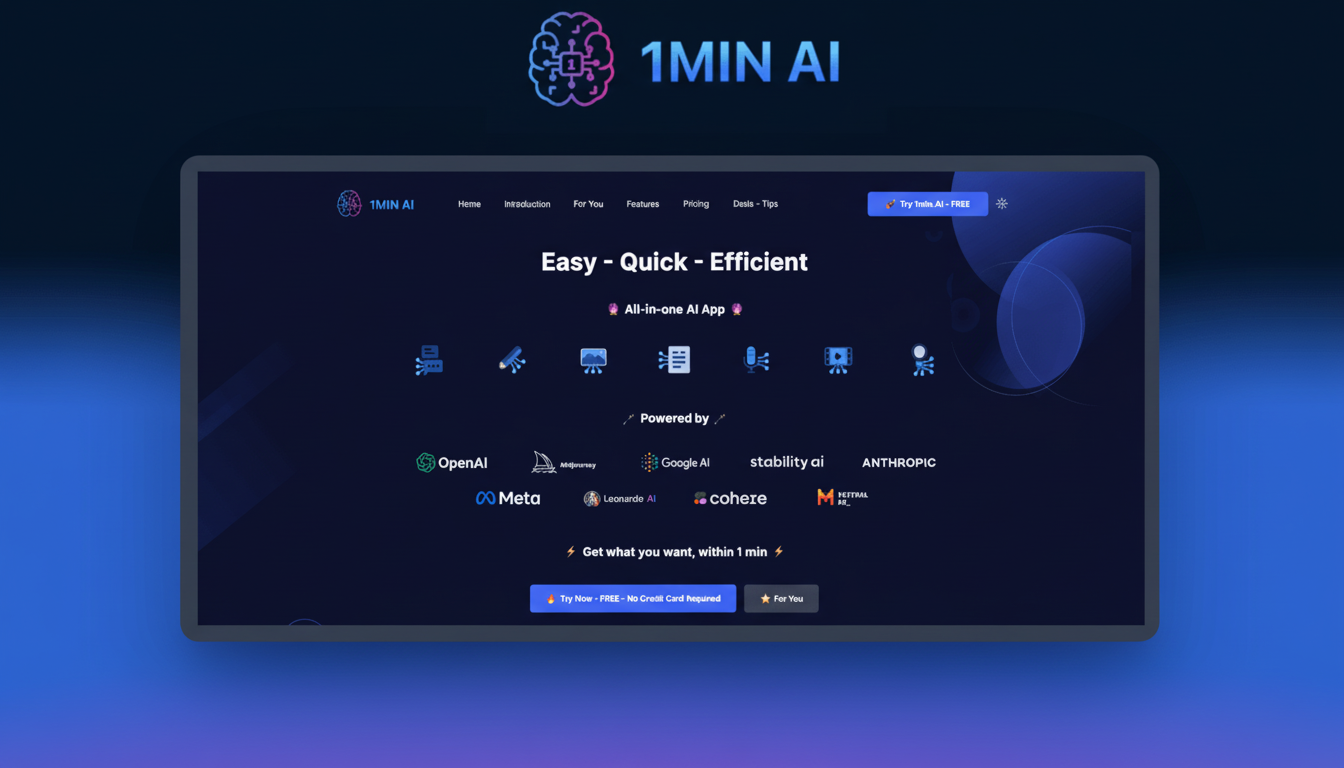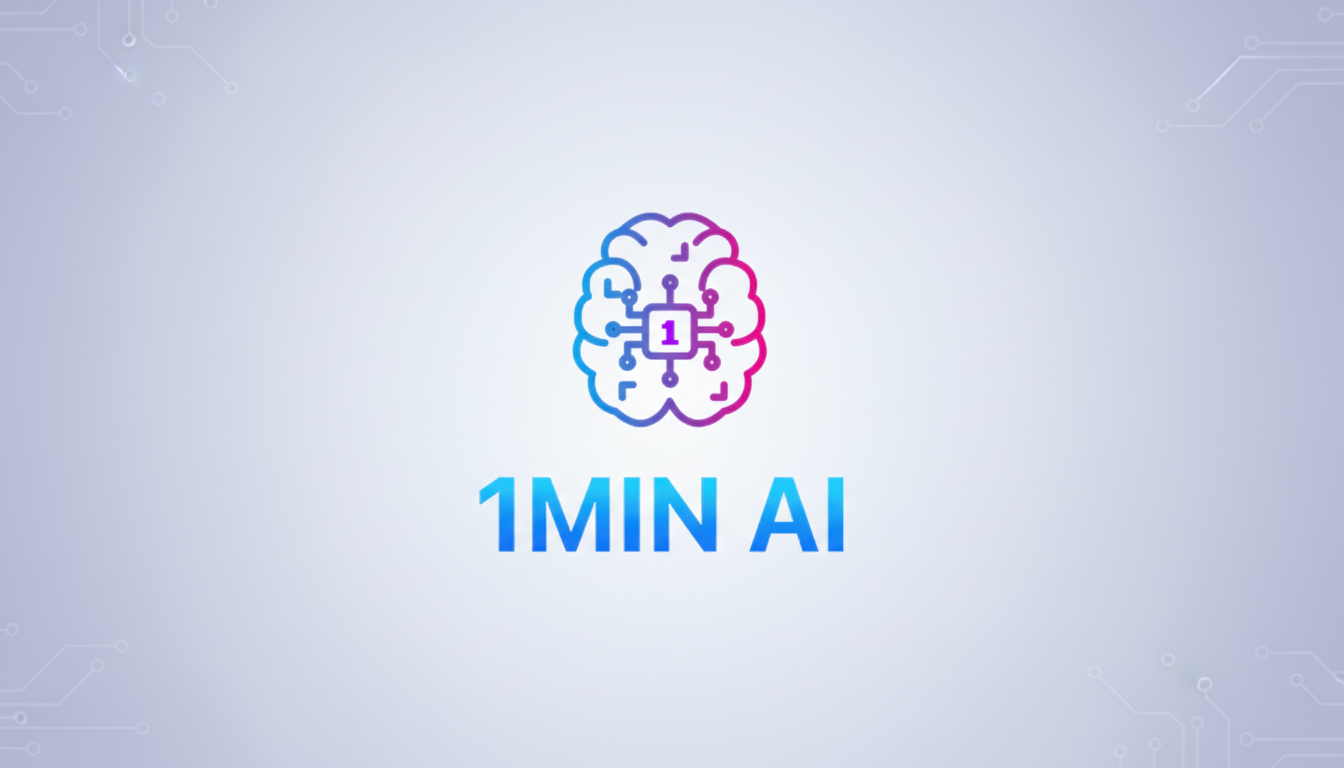An all-in-one AI hub known as 1min.AI makes the following value proposition: people pay roughly $30, and they can easily access models like ChatGPT, Gemini, and popular creative tools via the same dashboard. For the average individual or even small teams, the bundle is expected to streamline work with these various tools, collapsing the sprawl of logins, APIs, and billing into a centralized spot with a shared credit system.
What the $30 1min.AI plan includes and how credits work
1min.AI Pro is on a monthly credits basis, which can go toward text, image, audio, and video tasks. The company says that users can expect one million credits a month, which they frame in terms of rough workloads such as the following:
- What the $30 1min.AI plan includes and how credits work
- Why a unified AI hub matters for everyday workflows
- How the bundle’s value stacks up against single apps
- Data practices, privacy, and governance considerations
- Who benefits most from a unified, credit-based AI hub
- Bottom line on whether this $30 bundle is worth it

- Generating hundreds of thousands of words
- Researching nearly 2,000 SEO keywords
- Upscaling a few hundred images
- Converting six-figure character counts to speech
- Transcribing around 80 minutes of audio
Credits roll over, and daily logins offer bonus credits, which the company says “eliminates the use it or lose it pressure” that people on standard metered plans are familiar with.
People choose this bundle for the models, without all the context switching. They can start drafting with GPT, switch to Gemini for multimodal prompts, and then jump into various image generation workflows. It is not just a fancy chatbot—the platform stretches over content generation, creative production, and media editing.
Why a unified AI hub matters for everyday workflows
The generative AI landscape keeps getting more specialized. Even within a single technology family, GPT-class models often outshine in reasoning and composition, while Gemini’s multimodal strengths make it particularly productive on image and mixed-content analysis. That said, general-purpose chatbots can’t provide the same meticulous style and detail control over images that dedicated tools allow. A single interface with multiple engines lets users match the engine to the task without regenerating prompts or migrating files between apps.
The need for this orchestration will only keep growing. Gartner predicts that by 2026, generative AI APIs and models will be used by more than 80% of enterprises, up from a single-digit percentage just a few years before. Stanford’s AI Index identifies rapid expansion in multimodal capabilities and model count, making the “right tool for the job” choice more important—and clumsier if you have to manage them all separately.

How the bundle’s value stacks up against single apps
Popular with light to average users is the potential to mix and match freely at a flat, low price versus signing up for multiple account levels. ChatGPT Plus alone is around $20 per month. Google’s top tier is in a comparable price range, as are numerous individual image tools, which appear to be close to $10 per month, depending on the provider. Depending on only a few versions for occasional use could dramatically enhance the value proposition behind a unified plan at around $30, complementary to most separate subscriptions.
The outlook is not suitable for power users, but consider the caveats: model availability for use can shift, not all premium features may be included with your membership, and quota restrictions or fair-use policies will often stay in place. A steady stream of credits for infrastructure‑intensive use cases—such as high duty cycles, which often require unrestricted models—could quickly be outpaced by workflows reliant on high‑res image generation or protracted audio/video processing.
Data practices, privacy, and governance considerations
Any aggregator sits between you and the model providers, so data handling deserves attention. OpenAI API inputs aren’t used to train by default, but consumer chat products have different configuration settings. Gemini has its own policies for data retention and opt-in controls. It boils down to understanding how 1min.AI logs your prompts, how long they retain them, and whether enterprise controls—for example, data residency or workspaces and team-level permissions—are provided. If you work in a regulated industry or sensitive line of work, these details often matter as much as—or sometimes more than—the base model quality does.
Who benefits most from a unified, credit-based AI hub
Freelancers, marketers, students, and founders—anyone who needs flexible access across text, images, and audio—stand to benefit most from the offering. It’s also a good sandbox for teams experimenting with multimodal workflows who don’t want to juggle multiple trials and logins. For the heaviest-duty creative professionals or engineering teams with strict SLAs, standard direct subscriptions or API contracts with specialization of the models may still prove preferable.
Bottom line on whether this $30 bundle is worth it
For around $30, 1min.AI packages mainstream AI models into one offering with a large, continuously rolling credit pool and a focus on convenience for its users. If draft writing, research, images, and light media work all come across your desk, the economics and simplicity are hard to argue with. Just make sure you understand the exact models, the actual feature set, and the data practice policies before you’re roped in—and be sure that the credit math works out, so you actually spend the credits and get the savings you expect.

